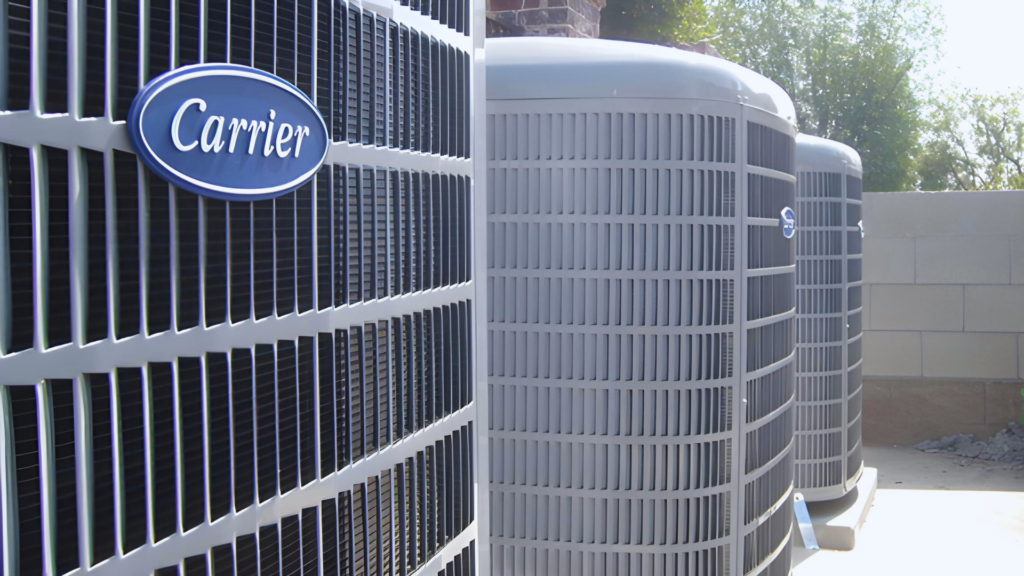The shifting nature of HVAC sales with Shelby Breger
A conversation about emerging technologies, including LiDAR and augmented reality, how the sales process is changing, and more

Image: Shelby Breger
Shelby Breger, co-founder of Conduit Tech, a startup that helps contractors design and sell high-performance systems, talked to us about emerging sales technologies in HVAC, including LiDAR, how the sales process is changing, and more.
How would you describe the shift that’s occurring in the HVAC sales world?
-
[In the past], when it came to equipment, there weren’t many tools to effectively design a system [as a contractor], and there weren’t as many models or sophisticated elements to consider every day — options and add-ons have expanded in so many ways.
-
The cost of installations has gone up so dramatically that, as a contractor, you need a process in place. I don’t know a person with $20k in cash sitting around. This is a major life decision for customers, and your process needs to reflect that.
Why is that important to contractors?
-
There’s not enough trust in the old-school sales process. There’s limited effective communication and explanation of how a solution helps, and I think this contributes to a view of HVAC as a commodity service, which we all know is not the case.
-
People want information. They want data. As a millennial, I’ll say we want this experience to be customized. HVAC never was a small ticket, but it certainly isn’t now. It takes time and data to build trust and rapport in the purchase process.
-
Contractors need to communicate why a solution is right for a customer. I think this is where adjusting the closing process to a homeowner is really valuable. It matters so much in making the “why you should go with us” case.
Of all the sales-related technologies emerging, which do you think will have the biggest impact?
-
Well, at Conduit, we’re super passionate about LiDAR. It’s a 3D modeling tool that’s available on iPad and iPhone Pros to scan homes, and build 3D models and 2D floorplans with super accurate dimensions.
-
We’re also excited about Augmented Reality (AR). So, how can you visualize things inside your home that you’ve never been able to visualize before?
How can contractors actually utilize LiDAR?
-
With Conduit, [for example], you take an iPad or iPhone Pro and scan the home as you walk through it, using the camera — you’re building out a 3D model as you go. It’s measuring windows, walls, doors, and all of that. You end up with a 3D representation of that home, which sets the foundation for a load calculation.
-
As a contractor, it enables you to get to a really accurate calculation in a fraction of the time, and you’re engaging the homeowner as you go. You’re talking about why you believe in taking a more scientific approach to sizing their system.
❝
What’s challenging today is that everybody is quoting “good, better, best,” and thinking about financing. If everyone’s offering those, you have to do something different to differentiate yourself
What about Augmented Reality (AR)?
-
If you’re doing a ductless install, there will be indoor heads. So, how do you help a customer understand what that will look like? We started leveraging AR to visualize where a customer’s three mini-splits can go, for example, and then [you can] ask what they find most appealing and have a conversation about it.
-
That’s what we see as so powerful here: Using design as a communication tool. Customers feel bought in; they’re part of the process now.
Do contractors object to using this kind of technology since it’s newer in the industry?
-
[This technology] is like field service management software. Eventually, everybody will have it.
-
Many companies can’t do a load calculation today because it’s expensive, both in the time it takes away from customer interactions and the in-office requirements. But it’s not so expensive if it takes eight minutes.
-
What’s challenging today is that everybody is quoting “good, better, best,” and thinking about financing. If everyone’s offering those, you have to do something different to differentiate yourself — and we’re finding that contractors want to show their customers that they’re the right company by using new tools.
What happens when everyone adopts this technology, too?
-
We currently work with hundreds of contractors, yet that’s less than 1% of the industry. There’s so much opportunity before hitting that threshold.
-
But once we do, where, say, 40% of the market is using it, I think we’ll start to see load calculations become a requirement in the sales process. Then it becomes a matter of, “Why don’t you do this [as a contractor]?”
-
The other piece is that it’s one thing to have the technology, but another to be a super user who knows how to make the best of it — there will still be those who are better at it.
Does the role of the contractor change as sales technology gets more sophisticated?
-
I think the contractor’s role has changed so much already, but I don’t see a world where in-home sales go away. During the first six months of Covid, nobody wanted anyone in their home. Yet, somehow, everyone went back to doing in-home sales within a year of the pandemic.
-
What was the underlying need for in-home sales? It was the need for differentiation, building value, and understanding what’s in that home. I think one shift we’re starting to see is customers wanting more information before contractors come on-site.
-
My perspective is that in-home sales aren’t going anywhere, it’s just, “What knowledge will the homeowner have going into a visit?”
This kind of technology can be perceived as available only to large contractors. So, if anything, what have smaller contractors told you so far?
-
In some cases, Conduit’s value is even greater [to smaller teams] because they need to save time, but they also benefit from increased sales — from higher ticket sizes and higher conversion.
-
Many smaller teams that we work with already spend a lot of time on design. They run detail-oriented processes, and come from the “home performance” community, thinking about insulation, ductwork, and IAQ.
-
One of our teams in Massachusetts said that, on the average home, they save 40 minutes, and on a 6,000 sq. ft. home, a couple of hours. The owner told me, “I now go to one more job per day because I don’t need to go back to the office to do my quotes.”
📬 Get our stories in your inbox
Keep reading
Congress urged to make contractor-friendly tax break permanent
A bill has been re-introduced to make permanent a small business-friendly tax break that's set to expire this year
Carrier wraps industry earnings with consumer, tariff views
The company's earnings follow the other two major U.S.-based residential OEMs, providing a look at how all three are reading today's market
Carrier and Lennox report earnings, eye 2025 price increases
A roundup of comments from Carrier and Lennox's Q3 earnings calls


